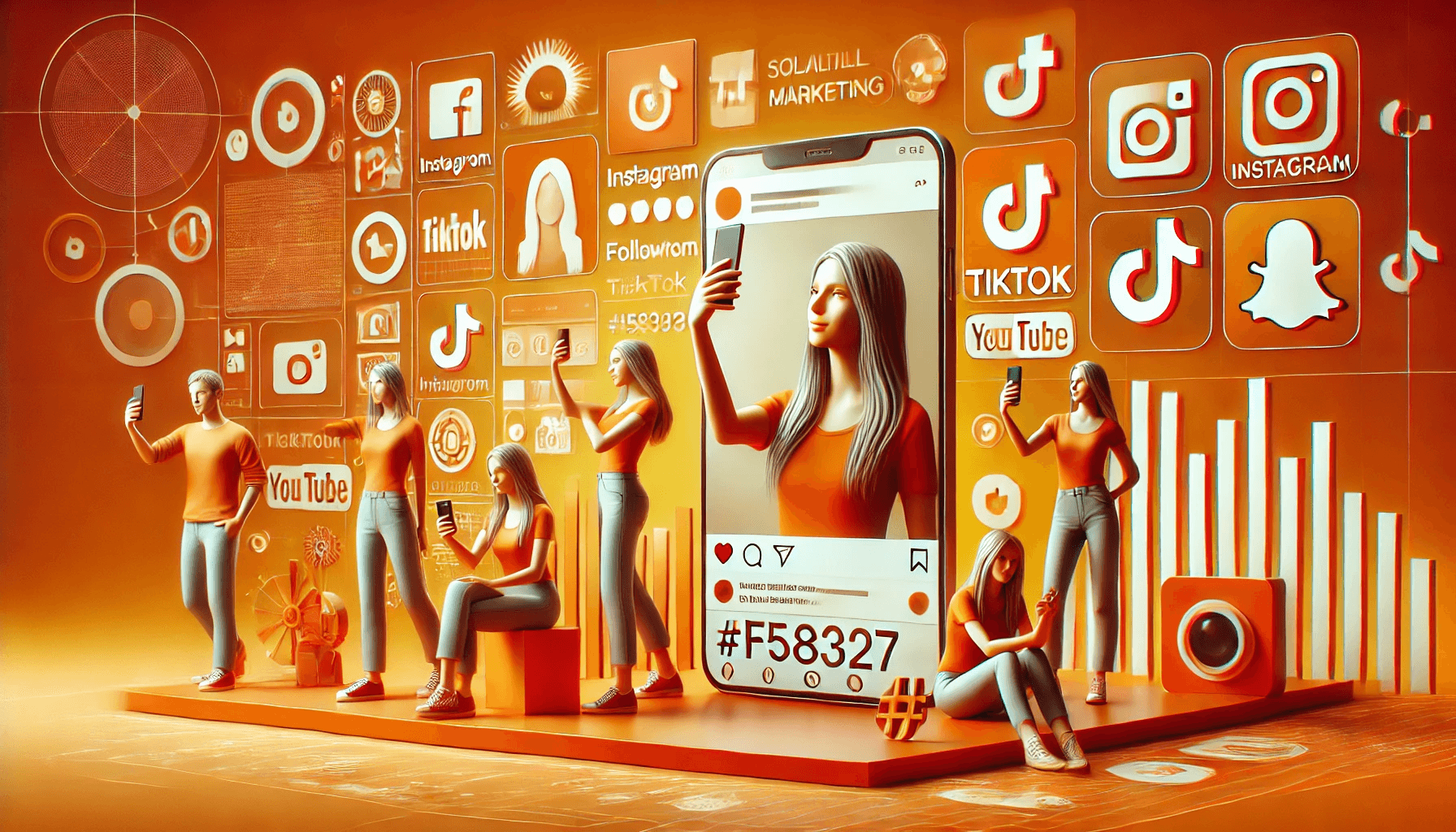
Blog
October 1, 2024
The History of Influencer Marketing

Blog
October 1, 2024
The History of Influencer Marketing
What do Santa Claus and a Roman gladiator have in common? Before you let your imagination run wild, let’s clarify: both have played pivotal roles in successful influencer marketing campaigns. Contrary to what many believe, influencer marketing didn't start when people began sharing selfies on social media. In fact, it's been around for millennia! Let’s explore the history of influencer marketing—how it originated and the valuable lessons today’s marketers can learn from those who blazed the trail before them.
So, when did influencers become a “thing?”
105 BCE – 404 CE: Ancient Roman Billboards
Roman gladiator games kicked off in 105 BCE and enjoyed immense popularity until Emperor Honorius banned them in 404 CE.
As the most eagerly awaited events in ancient Rome, gladiatorial battles were heavily advertised on billboards across the city. These ancient promotions resembled our modern combat sports marketing (though with much higher stakes). Many gladiators achieved celebrity status, even endorsing products like oil and wine!
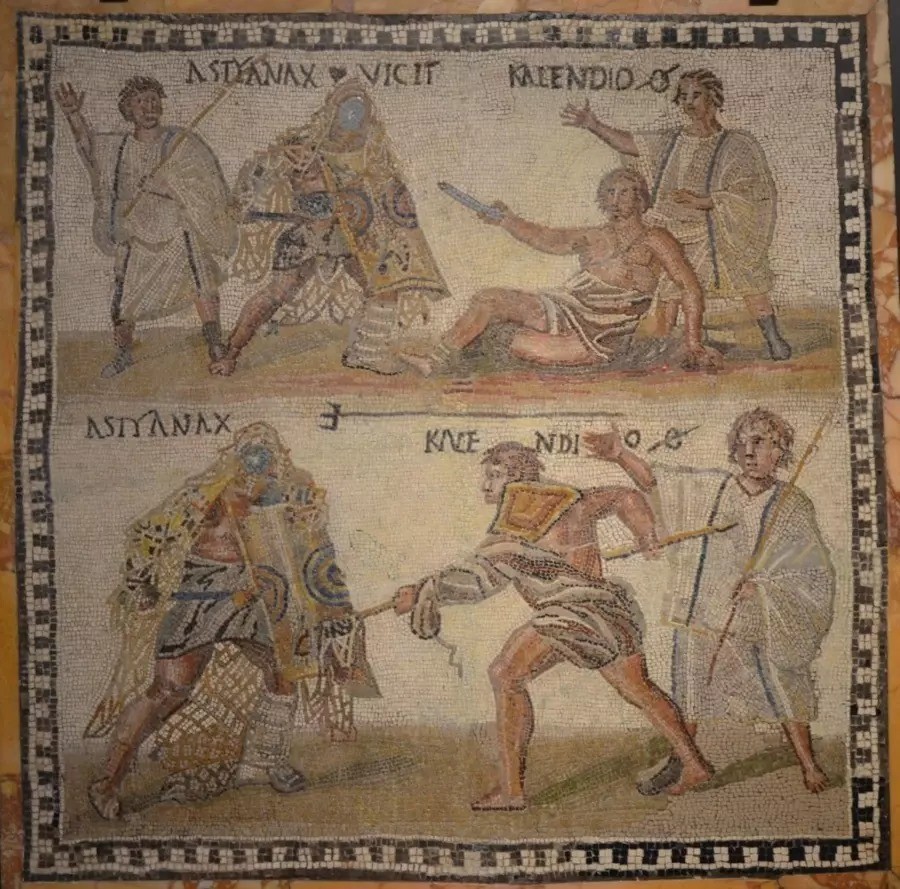
1760: Josiah Wedgwood Gets the Ultimate Celebrity Endorsement from Queen Charlotte
One of the earliest (and possibly most effective) examples of social proof stems from a collaboration between English potter Josiah Wedgwood and Queen Charlotte of Mecklenburg-Strelitz. As the queen’s favorite craftsman, Wedgwood convinced the royal family to allow him to label himself as the “Potter to Her Majesty” and even produce items depicting the king and queen.
This royal endorsement catapulted Wedgwood to international fame, opening doors to numerous high-profile clients. Even today, the Wedgwood name endures, reflecting the spirit and style of its 18th-century origin.

1882: Lillie Langtry Recommends Pears’ Soap
Lillie Langtry, an actress and producer, made history as the first woman to endorse a commercial product when she appeared in an advertisement for Pears Soap in 1882.
With the rise of the 19th-century Aesthetics Movement, brands began creating affordable products that were once exclusive to the ultra-wealthy. Advertisers like Thomas Barratt, known as the “father of modern advertising,” sought recognizable women to promote these items. Langtry, famous for her “ivory complexion,” answered the call, establishing a lucrative second career in advertising alongside her acting.
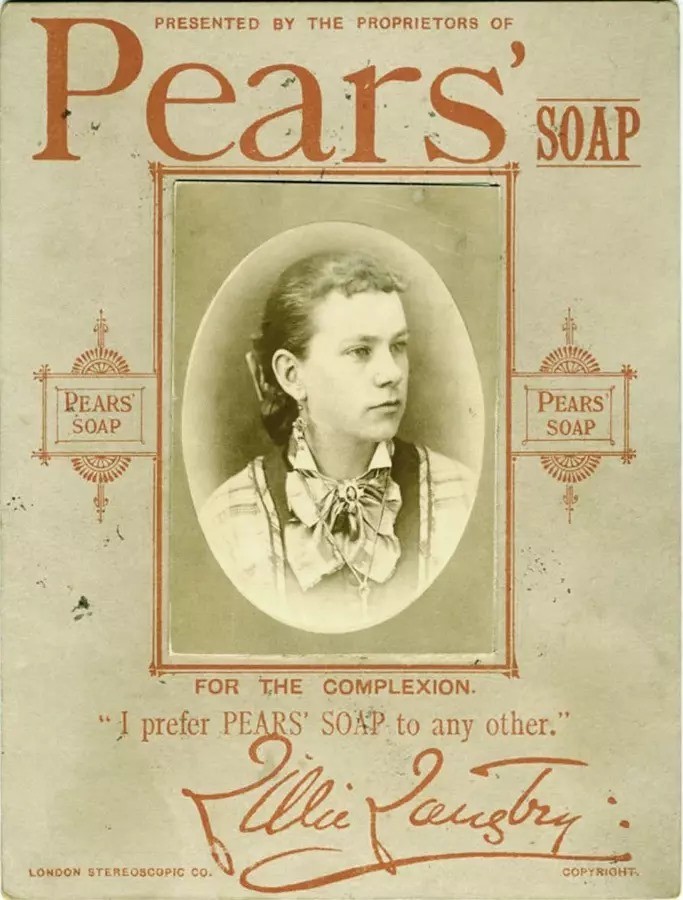
1890: Nancy Green Becomes the Face of Aunt Jemima
In 1890, R.T. Davis Milling Company hired Nancy Green as the face of their new pancake mix brand, Aunt Jemima, based on a popular character from a minstrel show.
Green gave Aunt Jemima a unique identity, turning it into a household name for over a century. Despite her character's marketability, evidence suggests Green received little to no financial reward for her efforts.
In 2020, Quaker Oats acknowledged Aunt Jemima’s origins in racial stereotypes, announcing plans to remove her image and rename the pancake mix. Yet, even as Aunt Jemima fades, some are working tirelessly to honor Nancy Green’s legacy as one of the first Black influencers.

1905: Fatty Arbuckle and Murad Cigarettes
Roscoe “Fatty” Arbuckle’s endorsement of Murad, a Turkish brand of cigarettes, marks another notable moment in influencer marketing history.
Legend has it that Murad representatives wanted Arbuckle to smoke their product on stage, but he declined, worried about ruining his voice. However, he agreed to promote the cigarettes through print advertising.
This was a turning point—people recognized that celebrity endorsements were a powerful marketing strategy, paving the way for a flood of celebrity influencers.
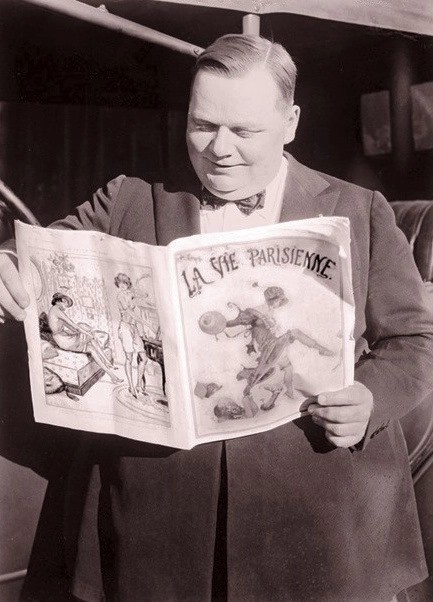
1931: Santa Promotes Coca-Cola
Did Coca-Cola create the jolly image of Santa Claus? It certainly appears so.
Coke stepped into influencer marketing in 1931 with its portrayal of Santa as the beloved figure we know today. Before this campaign, Santa had many different and often unappealing representations.
Coca-Cola understood that simply proclaiming their beverage was delicious wasn’t enough. They needed a trustworthy spokesperson—something that resonates even today, with 92% of consumers preferring recommendations from social media figures over direct brand advertisements.
This campaign opened the door for brands to utilize likable personalities to create a positive association through influencer marketing. Santa proved that if people love the endorser, they'll love the endorsed product.
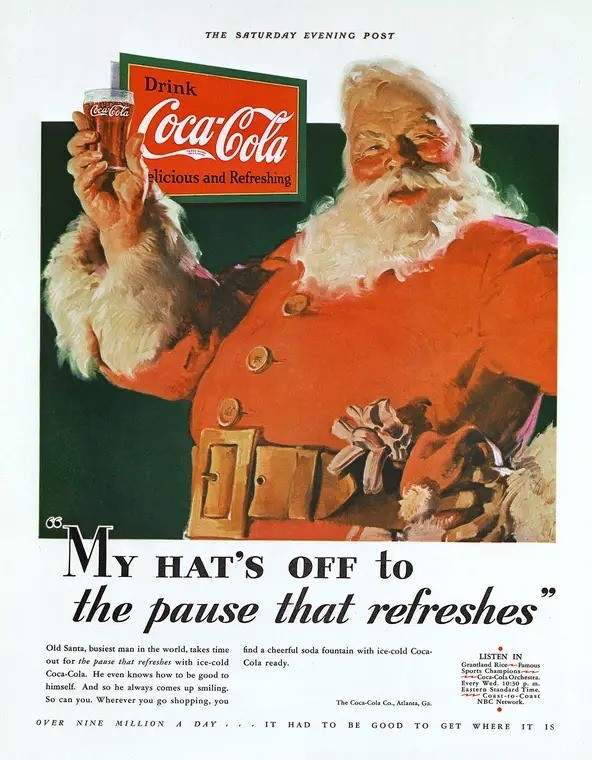
1950: The Era of the Marlboro Man
In the 1950s, the Marlboro Man was the epitome of cool.
Various actors portrayed this iconic figure, enhancing his celebrity status. The Marlboro Man didn’t just glamorize smoking; he shaped an entire generation’s perception of masculinity and ruggedness.
As one of the biggest influencers of his time, he represented the brand until 1999. Nowadays, social media influencers carry the torch, dictating trends in style and fashion.

2010: The Age of the Old Spice Man
Old Spice took a while to jump on the influencer marketing bandwagon, often perceived as an “old man” brand. However, that changed dramatically with the “The Man Your Man Could Smell Like” campaign, which revitalized its image.
The goal was to inject fun and relevance for a younger demographic. Starring Isaiah Mustafa, the campaign was a massive hit, setting a high standard for other brands.
A mere 30-second ad aired just before the Super Bowl and went viral the following day. The outcome? Old Spice sales doubled, and website traffic surged by 300%. This collaboration with Mustafa became one of the most successful campaigns in influencer marketing history.
2010: The Rise of Influencer Marketing on Social Media
By 2010, social media had exploded. Facebook was quickly gaining popularity, and brands began integrating their strategies with this new platform.
Amazon tapped into this trend by linking Facebook with their brand, allowing consumers to see what friends and family were purchasing. This strategy proved highly effective, especially among younger consumers who trust personal recommendations.
Amazon also introduced gift suggestions based on interests, helping brands to seek social proof from content creators in an evolving influencer marketing landscape.
2015: Reality TV Launches a Wave of Influencers
Reality TV has been around since Candid Camera in the 1940s, but it wasn’t until the social media era that it started creating notable influencers.
One of the first reality shows to capitalize on social media was Jersey Shore, premiering in 2009. With Instagram launching shortly after, it demonstrated that anyone could leverage brief fame into a sustainable online career.
From Kylie Jenner to niche stars like Kyle Richards from Real Housewives, many have shown how reality stardom, combined with a robust social media presence, can enhance personal branding.
2019: FabFitFun Collaborates with Khloe Kardashian
Beauty brand FabFitFun exemplifies the application of historical influencer marketing lessons using modern techniques. The brand has partnered with celebrities like Khloe Kardashian to promote its trendy monthly subscription-based beauty boxes on social media.
FabFitFun harnesses the vast reach of influencers to spread awareness and showcase the array of products available in their monthly offerings. Their ongoing collaborations with celebrities have solidified their success in a subscription box space that continues to thrive.
Present Day: Most Brands Have Adopted Influencer Marketing
Today, nearly every brand on social media has embraced some form of influencer marketing. This strategy has repeatedly proven to be the most effective way for brands to build trust in their products and services through authentic endorsements from relatable influencers.
Over time, the landscape of influencer marketing has evolved from solely relying on celebrity endorsements to favoring collaborations with smaller content creators. By partnering with nano and micro influencers, brands can engage hyper-specific audiences, fostering a more personal connection where followers view their favorite creators as friends rather than mere celebrities.
As brands strive to remain relevant in the creator economy, they must treat creators as equal partners in their marketing strategies—not just hired hands for transactional purposes. Establishing strong, collaborative relationships with credible influencers keeps brands at the forefront of the rapidly evolving digital ecosystem, turning them into household names.
Key Takeaway: Influencer Marketing Has Been Around for Centuries and Is Here to Stay
We’re not claiming that influencer marketing is more formidable than the Roman Empire (though it has outlasted it by about 2,000 years).
What we can assert is that influencer marketing is not going anywhere anytime soon. For brands that have yet to embrace this trend, now is the ideal time to tap into the creator economy and leverage the social media influencers your audience already knows and trusts.
So, when did influencers become a “thing?”
105 BCE – 404 CE: Ancient Roman Billboards
Roman gladiator games kicked off in 105 BCE and enjoyed immense popularity until Emperor Honorius banned them in 404 CE.
As the most eagerly awaited events in ancient Rome, gladiatorial battles were heavily advertised on billboards across the city. These ancient promotions resembled our modern combat sports marketing (though with much higher stakes). Many gladiators achieved celebrity status, even endorsing products like oil and wine!

1760: Josiah Wedgwood Gets the Ultimate Celebrity Endorsement from Queen Charlotte
One of the earliest (and possibly most effective) examples of social proof stems from a collaboration between English potter Josiah Wedgwood and Queen Charlotte of Mecklenburg-Strelitz. As the queen’s favorite craftsman, Wedgwood convinced the royal family to allow him to label himself as the “Potter to Her Majesty” and even produce items depicting the king and queen.
This royal endorsement catapulted Wedgwood to international fame, opening doors to numerous high-profile clients. Even today, the Wedgwood name endures, reflecting the spirit and style of its 18th-century origin.

1882: Lillie Langtry Recommends Pears’ Soap
Lillie Langtry, an actress and producer, made history as the first woman to endorse a commercial product when she appeared in an advertisement for Pears Soap in 1882.
With the rise of the 19th-century Aesthetics Movement, brands began creating affordable products that were once exclusive to the ultra-wealthy. Advertisers like Thomas Barratt, known as the “father of modern advertising,” sought recognizable women to promote these items. Langtry, famous for her “ivory complexion,” answered the call, establishing a lucrative second career in advertising alongside her acting.

1890: Nancy Green Becomes the Face of Aunt Jemima
In 1890, R.T. Davis Milling Company hired Nancy Green as the face of their new pancake mix brand, Aunt Jemima, based on a popular character from a minstrel show.
Green gave Aunt Jemima a unique identity, turning it into a household name for over a century. Despite her character's marketability, evidence suggests Green received little to no financial reward for her efforts.
In 2020, Quaker Oats acknowledged Aunt Jemima’s origins in racial stereotypes, announcing plans to remove her image and rename the pancake mix. Yet, even as Aunt Jemima fades, some are working tirelessly to honor Nancy Green’s legacy as one of the first Black influencers.

1905: Fatty Arbuckle and Murad Cigarettes
Roscoe “Fatty” Arbuckle’s endorsement of Murad, a Turkish brand of cigarettes, marks another notable moment in influencer marketing history.
Legend has it that Murad representatives wanted Arbuckle to smoke their product on stage, but he declined, worried about ruining his voice. However, he agreed to promote the cigarettes through print advertising.
This was a turning point—people recognized that celebrity endorsements were a powerful marketing strategy, paving the way for a flood of celebrity influencers.

1931: Santa Promotes Coca-Cola
Did Coca-Cola create the jolly image of Santa Claus? It certainly appears so.
Coke stepped into influencer marketing in 1931 with its portrayal of Santa as the beloved figure we know today. Before this campaign, Santa had many different and often unappealing representations.
Coca-Cola understood that simply proclaiming their beverage was delicious wasn’t enough. They needed a trustworthy spokesperson—something that resonates even today, with 92% of consumers preferring recommendations from social media figures over direct brand advertisements.
This campaign opened the door for brands to utilize likable personalities to create a positive association through influencer marketing. Santa proved that if people love the endorser, they'll love the endorsed product.

1950: The Era of the Marlboro Man
In the 1950s, the Marlboro Man was the epitome of cool.
Various actors portrayed this iconic figure, enhancing his celebrity status. The Marlboro Man didn’t just glamorize smoking; he shaped an entire generation’s perception of masculinity and ruggedness.
As one of the biggest influencers of his time, he represented the brand until 1999. Nowadays, social media influencers carry the torch, dictating trends in style and fashion.

2010: The Age of the Old Spice Man
Old Spice took a while to jump on the influencer marketing bandwagon, often perceived as an “old man” brand. However, that changed dramatically with the “The Man Your Man Could Smell Like” campaign, which revitalized its image.
The goal was to inject fun and relevance for a younger demographic. Starring Isaiah Mustafa, the campaign was a massive hit, setting a high standard for other brands.
A mere 30-second ad aired just before the Super Bowl and went viral the following day. The outcome? Old Spice sales doubled, and website traffic surged by 300%. This collaboration with Mustafa became one of the most successful campaigns in influencer marketing history.
2010: The Rise of Influencer Marketing on Social Media
By 2010, social media had exploded. Facebook was quickly gaining popularity, and brands began integrating their strategies with this new platform.
Amazon tapped into this trend by linking Facebook with their brand, allowing consumers to see what friends and family were purchasing. This strategy proved highly effective, especially among younger consumers who trust personal recommendations.
Amazon also introduced gift suggestions based on interests, helping brands to seek social proof from content creators in an evolving influencer marketing landscape.
2015: Reality TV Launches a Wave of Influencers
Reality TV has been around since Candid Camera in the 1940s, but it wasn’t until the social media era that it started creating notable influencers.
One of the first reality shows to capitalize on social media was Jersey Shore, premiering in 2009. With Instagram launching shortly after, it demonstrated that anyone could leverage brief fame into a sustainable online career.
From Kylie Jenner to niche stars like Kyle Richards from Real Housewives, many have shown how reality stardom, combined with a robust social media presence, can enhance personal branding.
2019: FabFitFun Collaborates with Khloe Kardashian
Beauty brand FabFitFun exemplifies the application of historical influencer marketing lessons using modern techniques. The brand has partnered with celebrities like Khloe Kardashian to promote its trendy monthly subscription-based beauty boxes on social media.
FabFitFun harnesses the vast reach of influencers to spread awareness and showcase the array of products available in their monthly offerings. Their ongoing collaborations with celebrities have solidified their success in a subscription box space that continues to thrive.
Present Day: Most Brands Have Adopted Influencer Marketing
Today, nearly every brand on social media has embraced some form of influencer marketing. This strategy has repeatedly proven to be the most effective way for brands to build trust in their products and services through authentic endorsements from relatable influencers.
Over time, the landscape of influencer marketing has evolved from solely relying on celebrity endorsements to favoring collaborations with smaller content creators. By partnering with nano and micro influencers, brands can engage hyper-specific audiences, fostering a more personal connection where followers view their favorite creators as friends rather than mere celebrities.
As brands strive to remain relevant in the creator economy, they must treat creators as equal partners in their marketing strategies—not just hired hands for transactional purposes. Establishing strong, collaborative relationships with credible influencers keeps brands at the forefront of the rapidly evolving digital ecosystem, turning them into household names.
Key Takeaway: Influencer Marketing Has Been Around for Centuries and Is Here to Stay
We’re not claiming that influencer marketing is more formidable than the Roman Empire (though it has outlasted it by about 2,000 years).
What we can assert is that influencer marketing is not going anywhere anytime soon. For brands that have yet to embrace this trend, now is the ideal time to tap into the creator economy and leverage the social media influencers your audience already knows and trusts.
Years Of Experiance
K+
Years Of Experiance
K+
Trusted Brands
K+
Awards and Recognitions
+
Global Influencer & Content Creators
M+


Radhika Mehra
Radhika Mehra
Chief Blog Writer
I’m Radhika Mehra, an experienced Chief Blog Writer at The Buzz Social - Top Influencer Marketing Agency In India, where I specialise in exploring the dynamic landscape of influencer marketing. Through extensive conversations with industry experts, I’ve gathered valuable insights that illuminate the trends, strategies, and best practices that are shaping this vibrant field.
I’m Radhika Mehra, an experienced Chief Blog Writer at The Buzz Social - Top Influencer Marketing Agency In India, where I specialise in exploring the dynamic landscape of influencer marketing. Through extensive conversations with industry experts, I’ve gathered valuable insights that illuminate the trends, strategies, and best practices that are shaping this vibrant field.
What do Santa Claus and a Roman gladiator have in common? Before you let your imagination run wild, let’s clarify: both have played pivotal roles in successful influencer marketing campaigns. Contrary to what many believe, influencer marketing didn't start when people began sharing selfies on social media. In fact, it's been around for millennia! Let’s explore the history of influencer marketing—how it originated and the valuable lessons today’s marketers can learn from those who blazed the trail before them.
So, when did influencers become a “thing?”
105 BCE – 404 CE: Ancient Roman Billboards
Roman gladiator games kicked off in 105 BCE and enjoyed immense popularity until Emperor Honorius banned them in 404 CE.
As the most eagerly awaited events in ancient Rome, gladiatorial battles were heavily advertised on billboards across the city. These ancient promotions resembled our modern combat sports marketing (though with much higher stakes). Many gladiators achieved celebrity status, even endorsing products like oil and wine!

1760: Josiah Wedgwood Gets the Ultimate Celebrity Endorsement from Queen Charlotte
One of the earliest (and possibly most effective) examples of social proof stems from a collaboration between English potter Josiah Wedgwood and Queen Charlotte of Mecklenburg-Strelitz. As the queen’s favorite craftsman, Wedgwood convinced the royal family to allow him to label himself as the “Potter to Her Majesty” and even produce items depicting the king and queen.
This royal endorsement catapulted Wedgwood to international fame, opening doors to numerous high-profile clients. Even today, the Wedgwood name endures, reflecting the spirit and style of its 18th-century origin.

1882: Lillie Langtry Recommends Pears’ Soap
Lillie Langtry, an actress and producer, made history as the first woman to endorse a commercial product when she appeared in an advertisement for Pears Soap in 1882.
With the rise of the 19th-century Aesthetics Movement, brands began creating affordable products that were once exclusive to the ultra-wealthy. Advertisers like Thomas Barratt, known as the “father of modern advertising,” sought recognizable women to promote these items. Langtry, famous for her “ivory complexion,” answered the call, establishing a lucrative second career in advertising alongside her acting.

1890: Nancy Green Becomes the Face of Aunt Jemima
In 1890, R.T. Davis Milling Company hired Nancy Green as the face of their new pancake mix brand, Aunt Jemima, based on a popular character from a minstrel show.
Green gave Aunt Jemima a unique identity, turning it into a household name for over a century. Despite her character's marketability, evidence suggests Green received little to no financial reward for her efforts.
In 2020, Quaker Oats acknowledged Aunt Jemima’s origins in racial stereotypes, announcing plans to remove her image and rename the pancake mix. Yet, even as Aunt Jemima fades, some are working tirelessly to honor Nancy Green’s legacy as one of the first Black influencers.

1905: Fatty Arbuckle and Murad Cigarettes
Roscoe “Fatty” Arbuckle’s endorsement of Murad, a Turkish brand of cigarettes, marks another notable moment in influencer marketing history.
Legend has it that Murad representatives wanted Arbuckle to smoke their product on stage, but he declined, worried about ruining his voice. However, he agreed to promote the cigarettes through print advertising.
This was a turning point—people recognized that celebrity endorsements were a powerful marketing strategy, paving the way for a flood of celebrity influencers.

1931: Santa Promotes Coca-Cola
Did Coca-Cola create the jolly image of Santa Claus? It certainly appears so.
Coke stepped into influencer marketing in 1931 with its portrayal of Santa as the beloved figure we know today. Before this campaign, Santa had many different and often unappealing representations.
Coca-Cola understood that simply proclaiming their beverage was delicious wasn’t enough. They needed a trustworthy spokesperson—something that resonates even today, with 92% of consumers preferring recommendations from social media figures over direct brand advertisements.
This campaign opened the door for brands to utilize likable personalities to create a positive association through influencer marketing. Santa proved that if people love the endorser, they'll love the endorsed product.

1950: The Era of the Marlboro Man
In the 1950s, the Marlboro Man was the epitome of cool.
Various actors portrayed this iconic figure, enhancing his celebrity status. The Marlboro Man didn’t just glamorize smoking; he shaped an entire generation’s perception of masculinity and ruggedness.
As one of the biggest influencers of his time, he represented the brand until 1999. Nowadays, social media influencers carry the torch, dictating trends in style and fashion.

2010: The Age of the Old Spice Man
Old Spice took a while to jump on the influencer marketing bandwagon, often perceived as an “old man” brand. However, that changed dramatically with the “The Man Your Man Could Smell Like” campaign, which revitalized its image.
The goal was to inject fun and relevance for a younger demographic. Starring Isaiah Mustafa, the campaign was a massive hit, setting a high standard for other brands.
A mere 30-second ad aired just before the Super Bowl and went viral the following day. The outcome? Old Spice sales doubled, and website traffic surged by 300%. This collaboration with Mustafa became one of the most successful campaigns in influencer marketing history.
2010: The Rise of Influencer Marketing on Social Media
By 2010, social media had exploded. Facebook was quickly gaining popularity, and brands began integrating their strategies with this new platform.
Amazon tapped into this trend by linking Facebook with their brand, allowing consumers to see what friends and family were purchasing. This strategy proved highly effective, especially among younger consumers who trust personal recommendations.
Amazon also introduced gift suggestions based on interests, helping brands to seek social proof from content creators in an evolving influencer marketing landscape.
2015: Reality TV Launches a Wave of Influencers
Reality TV has been around since Candid Camera in the 1940s, but it wasn’t until the social media era that it started creating notable influencers.
One of the first reality shows to capitalize on social media was Jersey Shore, premiering in 2009. With Instagram launching shortly after, it demonstrated that anyone could leverage brief fame into a sustainable online career.
From Kylie Jenner to niche stars like Kyle Richards from Real Housewives, many have shown how reality stardom, combined with a robust social media presence, can enhance personal branding.
2019: FabFitFun Collaborates with Khloe Kardashian
Beauty brand FabFitFun exemplifies the application of historical influencer marketing lessons using modern techniques. The brand has partnered with celebrities like Khloe Kardashian to promote its trendy monthly subscription-based beauty boxes on social media.
FabFitFun harnesses the vast reach of influencers to spread awareness and showcase the array of products available in their monthly offerings. Their ongoing collaborations with celebrities have solidified their success in a subscription box space that continues to thrive.
Present Day: Most Brands Have Adopted Influencer Marketing
Today, nearly every brand on social media has embraced some form of influencer marketing. This strategy has repeatedly proven to be the most effective way for brands to build trust in their products and services through authentic endorsements from relatable influencers.
Over time, the landscape of influencer marketing has evolved from solely relying on celebrity endorsements to favoring collaborations with smaller content creators. By partnering with nano and micro influencers, brands can engage hyper-specific audiences, fostering a more personal connection where followers view their favorite creators as friends rather than mere celebrities.
As brands strive to remain relevant in the creator economy, they must treat creators as equal partners in their marketing strategies—not just hired hands for transactional purposes. Establishing strong, collaborative relationships with credible influencers keeps brands at the forefront of the rapidly evolving digital ecosystem, turning them into household names.
Key Takeaway: Influencer Marketing Has Been Around for Centuries and Is Here to Stay
We’re not claiming that influencer marketing is more formidable than the Roman Empire (though it has outlasted it by about 2,000 years).
What we can assert is that influencer marketing is not going anywhere anytime soon. For brands that have yet to embrace this trend, now is the ideal time to tap into the creator economy and leverage the social media influencers your audience already knows and trusts.
Years Of Experiance
K+
Trusted Brands
K+
Awards and Recognitions
+
Global Influencer & Content Creators
M+

Radhika Mehra
Chief Blog Writer
I’m Radhika Mehra, an experienced Chief Blog Writer at The Buzz Social - Top Influencer Marketing Agency In India, where I specialise in exploring the dynamic landscape of influencer marketing. Through extensive conversations with industry experts, I’ve gathered valuable insights that illuminate the trends, strategies, and best practices that are shaping this vibrant field.
READ MORE
Check our other Blogs with useful insight and information for your Influencer Marketing.
READ MORE
Check our other Blogs with useful insight and information for your Influencer Marketing.
READ MORE
Check our other Blogs with useful insight and information for your Influencer Marketing.
